
Board 1: The Climate Emergency
Welcome to this exhibition looking at the climate emergency and the many ways the DCU community is responding to it.
The science behind the climate emergency is well established. Climate change is real and human activities are the main cause. The concentration of greenhouse gases in the earth’s atmosphere is directly linked to the average global temperature and this concentration has been steadily rising since the industrial revolution. The Intergovernmental Panel on Climate Change, set up by the World Meteorological Organisation and the United Nations Environment Programme, has warned that “Climate change is a threat to human well-being and planetary health. There is a rapidly closing window of opportunity to secure a liveable and sustainable future for all.”
Higher Education Institutions must play a pivotal role in responding to this crisis. Through research, teaching, community outreach and other initiatives, HEIs can foster awareness and understanding, build essential skills and competencies, and inspire and empower people to take action.
This exhibition begins with a series of images that illustrate the severity of the climate emergency and the urgent need to take action. This is followed by examples of initiatives currently being taken to address some of the issues:
- Actions on campus that contribute to sustainability and biodiversity
- Education for Sustainable Development
- Examples of institutes, centres and projects focussed on climate justice
This exhibition is not only designed to showcase initiatives already in place. It is also a call to action. A starting point for everyone in the DCU community, staff and students, to take whatever action they can and contribute to a safe, sustainable and just future for all people and the planet.
Copernicus
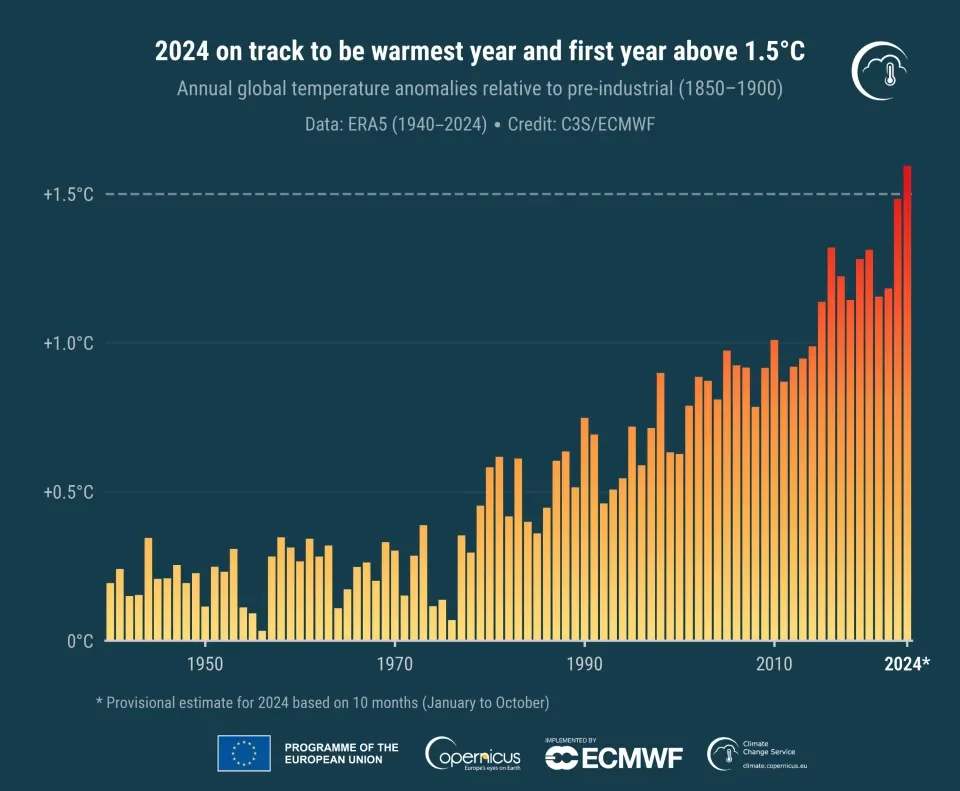
Copernicus
The Copernicus Climate Change Service monitors climate change on behalf of the European Union. In November 2024 they published data showing that 2024 is almost certain to be the first year with surface air temperatures 1.5 degrees above pre-industrial levels. This figure is significant as the Intergovernmental Panel on Climate Change have identified it as the point where our world will suffer negative impacts on intensity and frequency of extreme events, on resources, ecosystems, biodiversity, food security, cities, tourism, and carbon removal.
Climate Stripes

Climate Stripes
The climate stripes were developed by Professor Ed Hawkins from the University of Reading in 2018. Containing no words or numbers, they effectively show just how much our planet has warmed since 1961. Each stripe represents a year. Shades of blue show cooler than average years, shades of red show warmer than average years. The cluster of deep red stripes on the right-hand side of the graph tell an important tale.
The Great Acceleration
The Great Acceleration is a term used to describe the rapid and widespread increase in human activity and its impact on Earth's natural systems, which began around the mid-20th century.
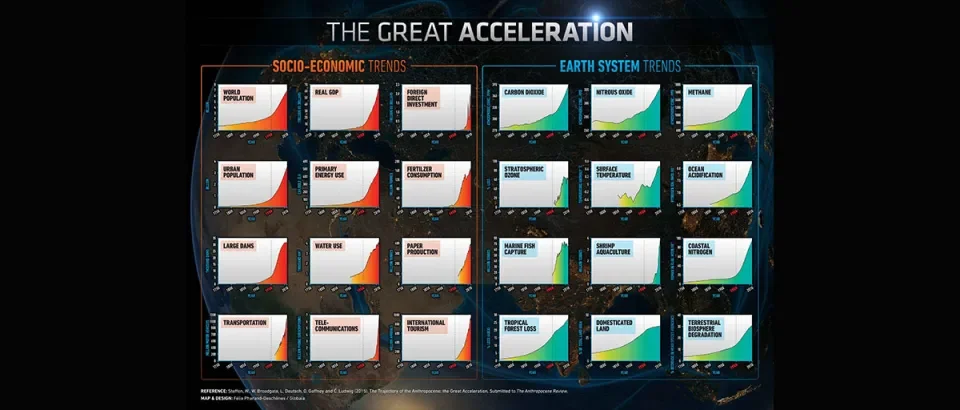
The Great Acceleration
It is often associated with the Anthropocene, a proposed geological era marked by significant human influence on Earth's ecosystems and climate. The Great Acceleration encompasses various social, economic, and environmental changes that have occurred on a global scale since the 1950s.
Planetary Boundaries
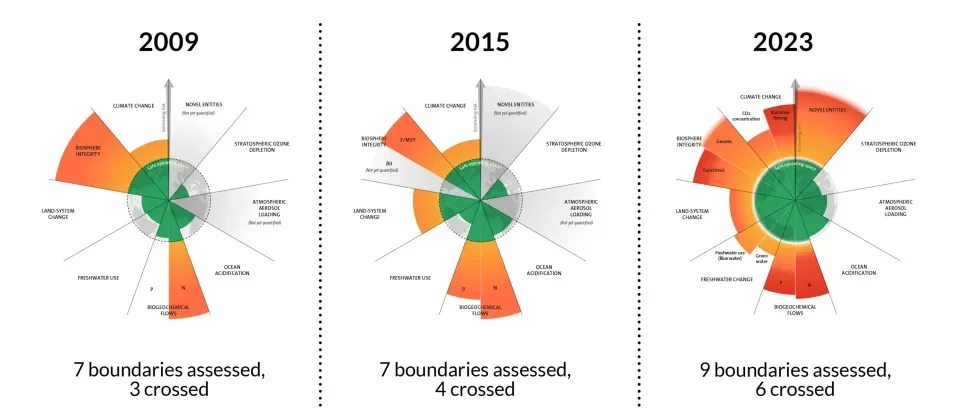
Planetary Boundaries
Developed by the Stockholm Resilience Centre at Stockholm University, these nine planetary boundaries show the limits at which our planet (and the people on it) can continue to develop and thrive. Crossing any of the boundaries increases the likelihood of large scale environmental damage. The most recent analysis shows that six of the nine boundaries have been crossed.
The Lancet Countdown on health and climate change
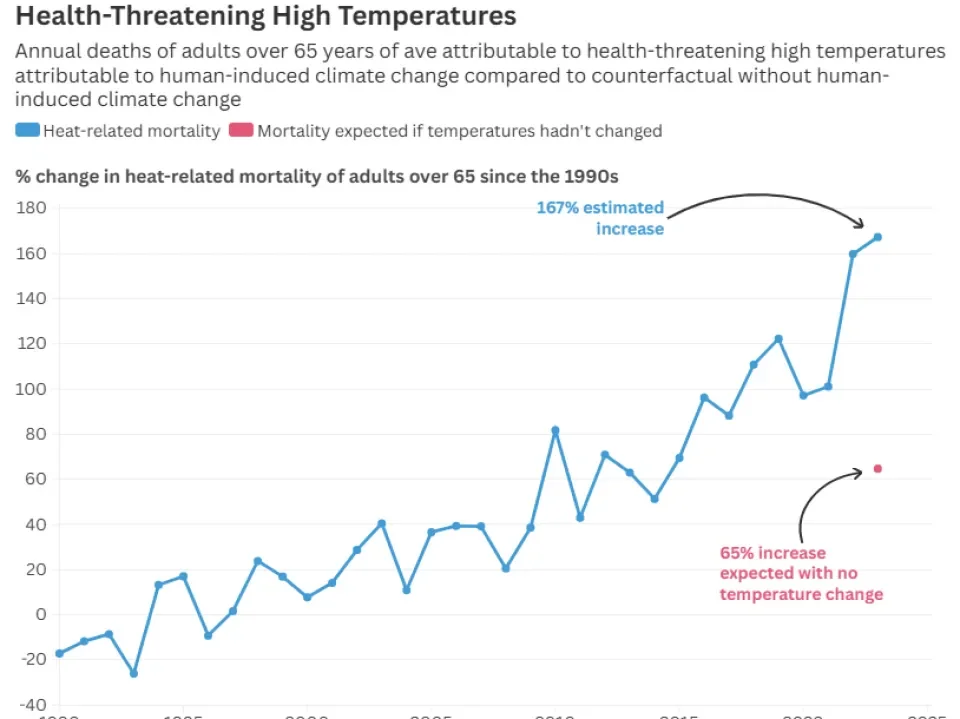
Lancet - Health threatening high temperatures
The very real impact of climate change on the health and wellbeing of people is illustrated in the Lancet’s annual report. From mortality related to heat exposure and extreme weather events, to the impact climate change is having on social and economic conditions, the report shows just how severe the impacts are: “The growing accumulation of greenhouse gases in the atmosphere is pushing the world to a future of increasingly dangerous health hazards and reducing the chances of survival of vulnerable people all around the globe.”
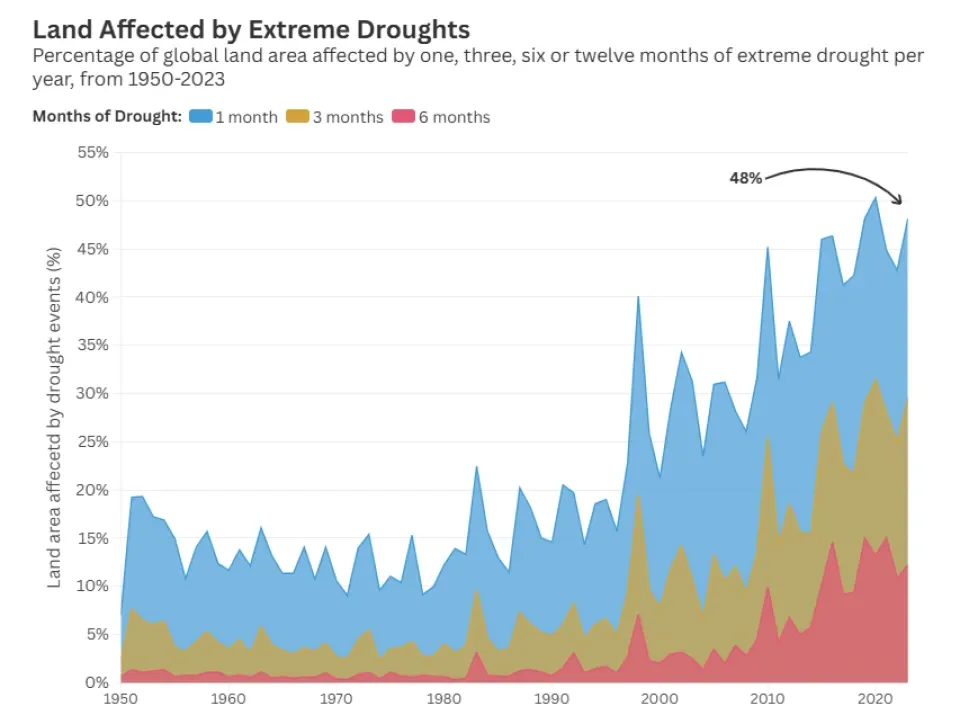
Lancet - Land affected by extreme droughts
